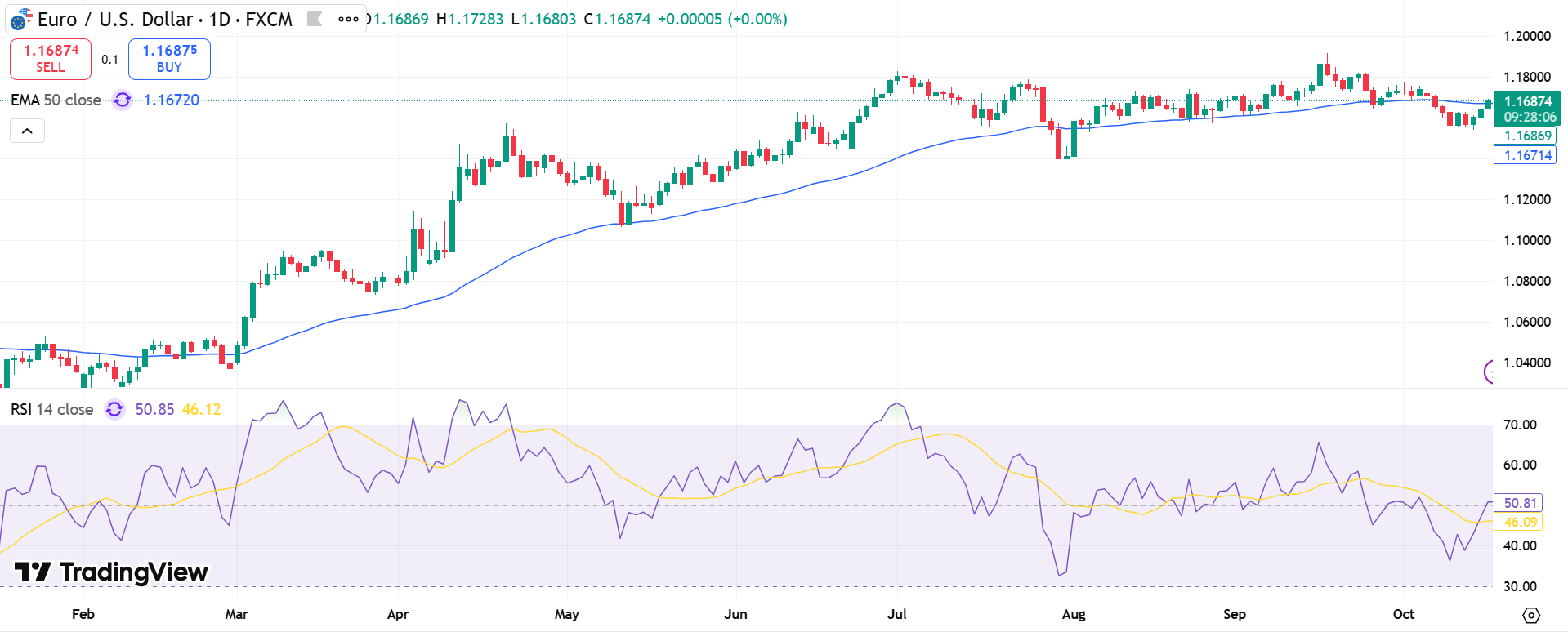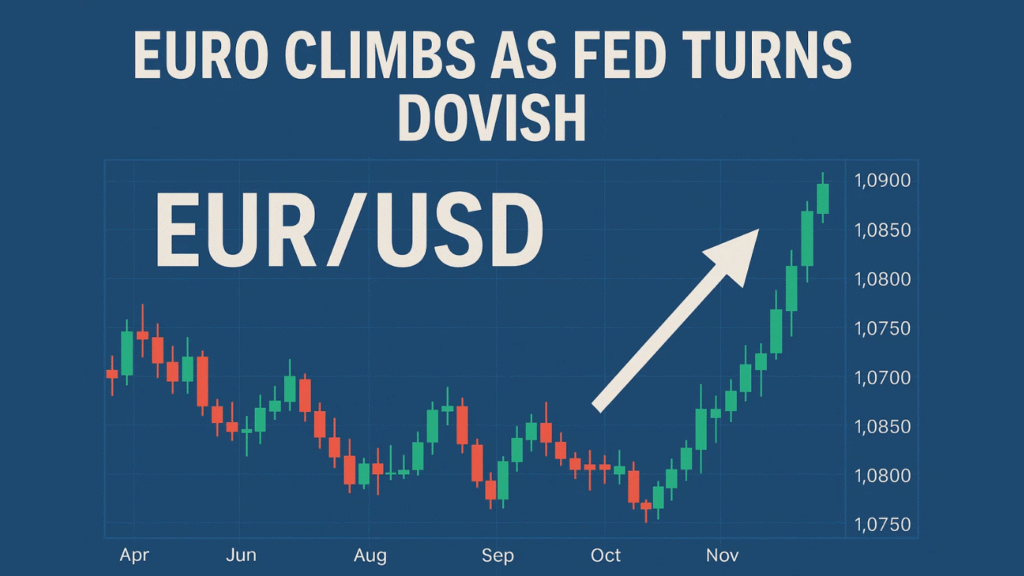The EUR/USD pair extended its winning streak for a fourth consecutive session on Friday, trading near 1.1710 during Asian hours. The Euro gained fresh momentum after France’s government survived a no-confidence vote, easing political uncertainty across the Eurozone.
Prime Minister Sébastien Lecornu’s decision to suspend a controversial pension reform helped secure backing from several left-wing lawmakers, reinforcing short-term confidence in French and regional stability.
The political relief added to ongoing U.S. Dollar weakness, allowing the Euro to extend its recovery. Traders note that a continued push above the 55-day Simple Moving Average (SMA) at 1.1683 could open the door toward the October high of 1.1778, and eventually the 2025 ceiling of 1.1918, before testing the psychological 1.2000 mark.
Support remains firm at 1.1542 and 1.1391, while staying above the 200-day SMA at 1.1247 keeps the broader trend positive. Momentum indicators back this view—the Relative Strength Index (RSI) is approaching 50, signaling a mild recovery, while the Average Directional Index (ADX) near 19 suggests that the bullish trend could gain strength in the short term.
Fed Easing Signals Weigh on the Dollar
The Euro’s rebound also reflects growing pressure on the U.S. Dollar, which continues to decline as Treasury yields soften. The Dollar Index (DXY) slipped toward 98.40, hovering near multi-day lows, as traders adjusted positions following the Federal Reserve’s recent policy move.
The Fed cut interest rates by 25 basis points on September 17, citing slower job creation and elevated inflation at 2.7% (headline) and 2.9% (core). The new dot plot signaled an additional 50 basis points of easing before year-end, with Chair Jerome Powell emphasizing a data-dependent stance.
Key drivers influencing market sentiment include:
- Softer U.S. inflation and labor data
- Expectations of further Fed rate cuts
- Dovish rhetoric from Powell and Miran
- Weakness in U.S. Treasury yields
These developments have prompted traders to trim their long-Dollar exposure, benefiting the Euro in the near term.

Caution Persists Amid Trade Tensions
Despite improved sentiment, traders remain cautious as U.S.–China trade tensions and global growth risks persist. President Donald Trump’s threat to impose 100% tariffs on Chinese imports has reignited fears of a renewed trade war.
However, diplomatic efforts continue, with Treasury Secretary Scott Bessent and China’s Commerce Ministry confirming ongoing dialogue—raising hopes for a potential extension of the current tariff truce.
Meanwhile, the European Central Bank (ECB) has kept policy steady, projecting core inflation at 2.4% for 2025 and signaling confidence that price pressures will ease gradually. With both the Fed and ECB adopting cautious tones, EUR/USD may remain range-bound until a clearer catalyst emerges.


